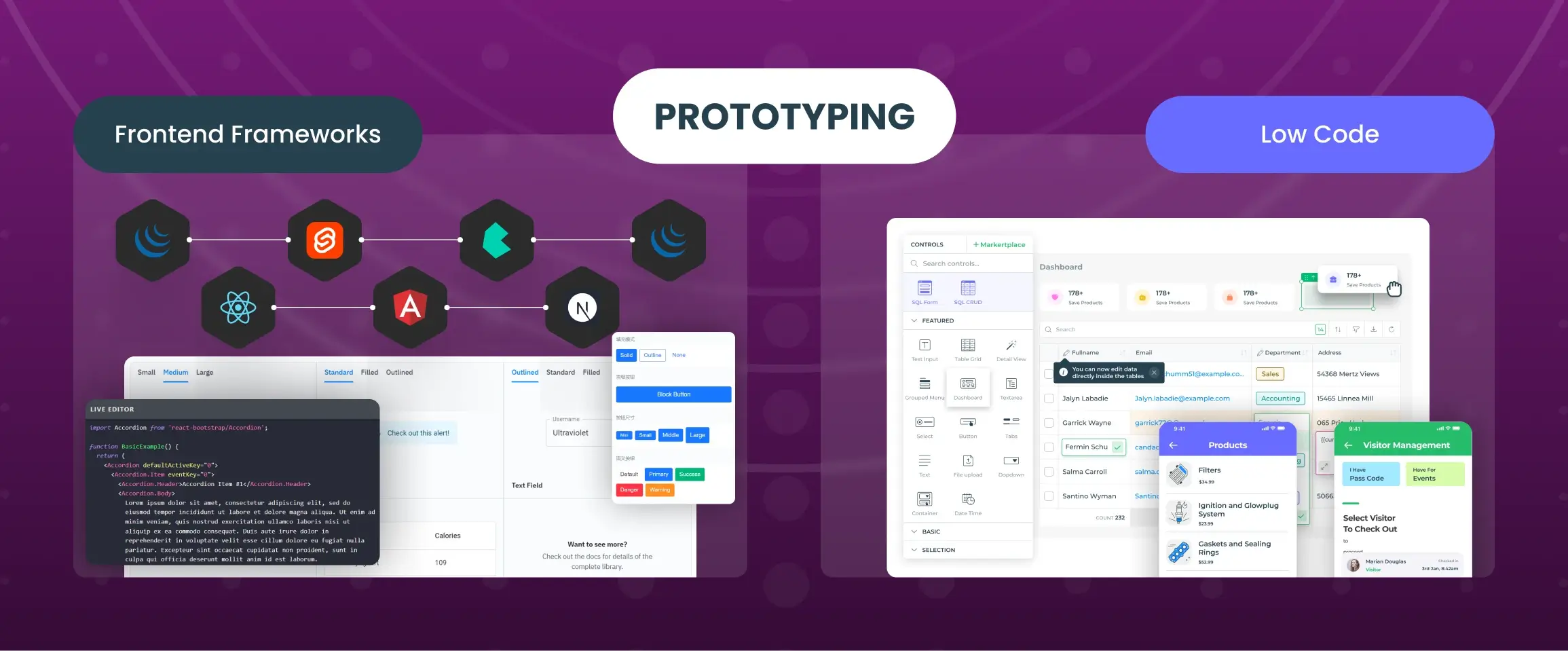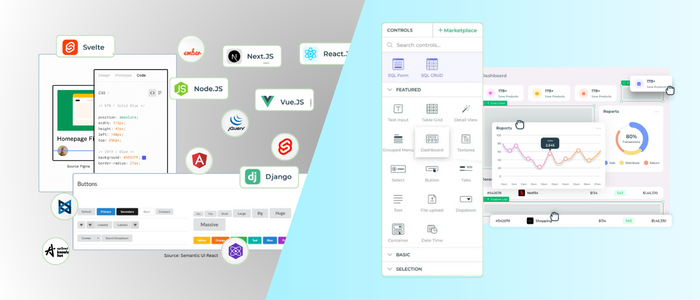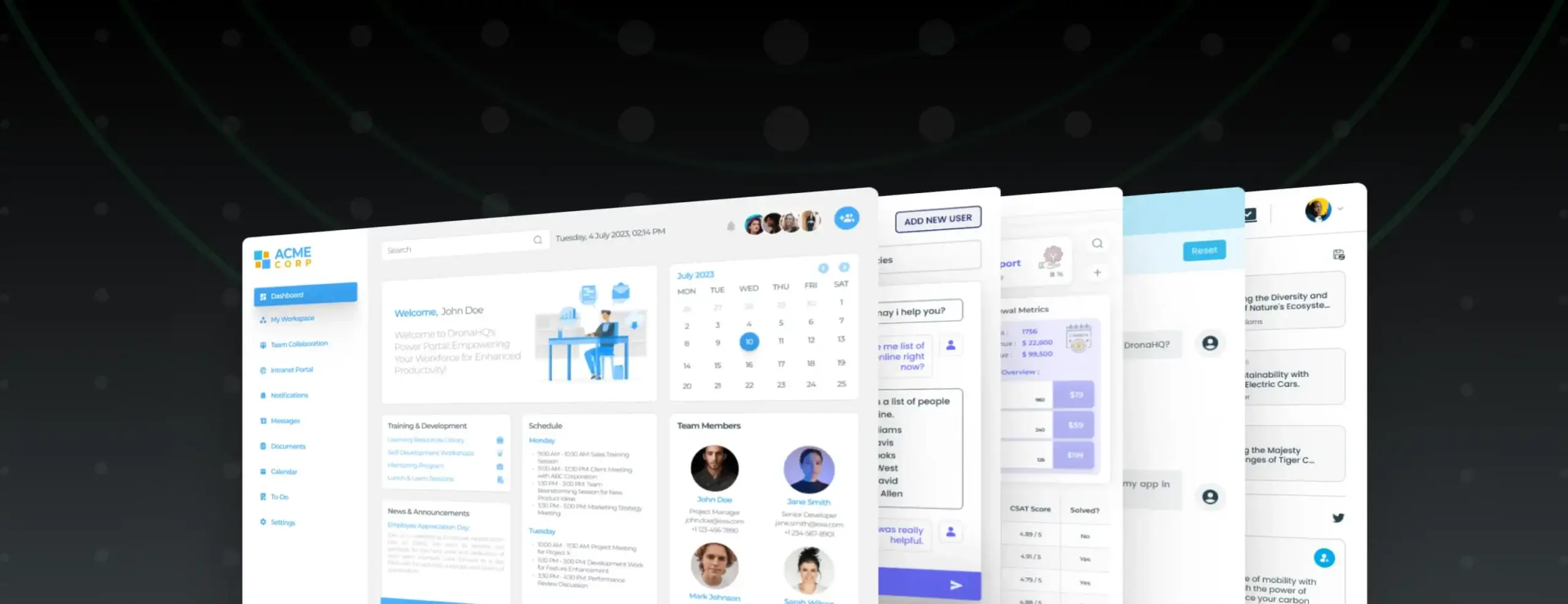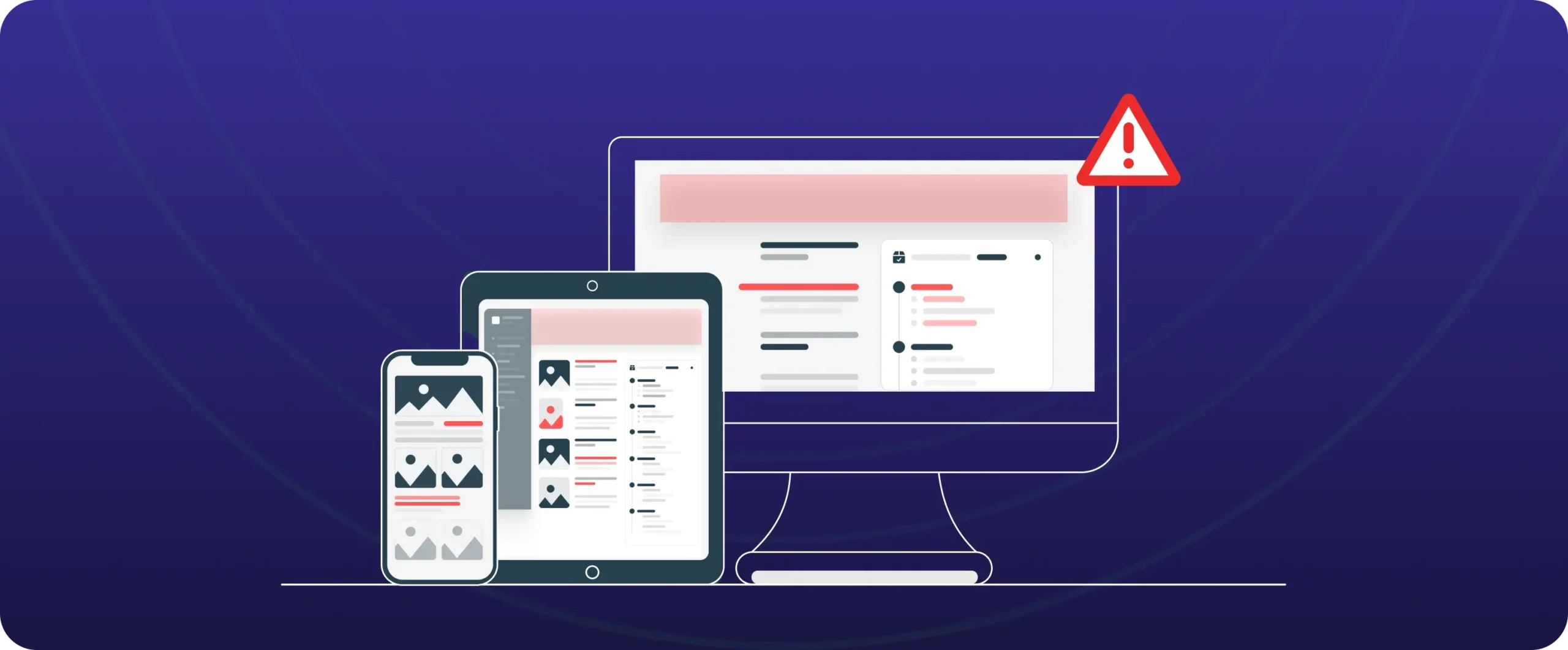

Using low-code platform to build frontend prototypes
If software development were a kingdom, prototyping would be the pragmatic sceptre – when wielded wisely, it helps turn the ‘what if’s into ‘what works,’ transforming ideas into tangible form. ūü™Ą
Research from McKinsey shows that around 50% of product launches fail to hit business targets. The major causes? Poor strategic planning, which includes a lack of risk assessment in early product development.
Prototyping is the backbone of product development
One of the key advantages of prototyping lies in its ability to bridge the gap between concept and reality. Every creative venture begins with an idea, and prototyping facilitates the visualization and exploration of these concepts. Prototyping facilitates immediate feedback, collaboration, and risk reduction in product development. It enables early concept validation through user feedback and inspires innovation by encouraging creative exploration. As a vital tool in product development, prototyping transforms product development, ensuring a balance of creativity and practicality for groundbreaking solutions.
What is Rapid prototyping?
Prototyping can be repeated numerous times along the new software development process using the test data to achieve the desired functionality. Rapid prototyping is a relatively new term and, in its simplest form, creates an interactive prototype quickly to visually and functionally evaluate the essential capabilities of the desired application.
What is frontend prototyping?
A frontend prototype is a prototype that has been built with HTML, CSS and JavaScript. The purpose is to demonstrate a realistic experience with data and content.
With a frontend prototype, you can design every nuance of the product. From loading animations to UI micro-interactions, all of these can be designed to the smallest detail, which will make for a better product experience.
How can you get started with a frontend prototype?
Online playgrounds would be a great option if you want to quickly prototype a single feature. If you want to quickly build more meaningful experiences with interactive frontend, whole workflows, use real data and have an effective artefact for user testing, using a low-code frontend builder should be on your list.
Using a low-code platform for rapid prototyping
The time it takes to develop a prototype can vary depending on the complexity of the project and the features included in the prototype. However, typically a functional prototype can be developed within 2-6 months – subject to the development process and quality of tools adopted, and various UI libraries. The perpetual evolution of technology further complicates matters, necessitating continuous awareness of the latest advancements in the expansive array of frontend tools.
Low-code platforms enable fast and efficient development of frontends by reducing the amount of manual coding required and instead relying on pre-built components and connectors, templates, drag-and-drop interfaces, and visual modelling options.
Initially, low-code platforms were used by non-technical founders to create prototypes of apps. That was idea validation and mainly testing theories and features before writing actual code and doubling down on planned activities.
But now, companies use low-code or no-code prototypes ‚Äúto give non- or semi-technical end users, even DevOps and security engineers, the ability to easily and quickly deploy applications without the need for custom development.‚ÄĚ
This approach to frontend prototype development significantly eases the burden on developers. The availability of these ready-made elements enables developers to expedite the prototyping process without compromising quality.
Why build frontend prototypes using low-code?
Using low-code platforms for frontend prototyping offers several advantages that can streamline the prototyping process and enhance collaboration. 
Set to hit $187 billion by 2030, low-code technology continues to be a game-changer for custom application development. By eliminating the need for coding from scratch, components can be dragged and dropped, significantly reducing initial prototyping time.
- Foster business growth: 90% of low-code users think their company has been able to grow faster due to its low-code usage (source).
We started out using low-code tools to cut down on the development time – which we did significantly. However, in an unexpected turn of events, our innovations team leads started using low-code to create frontend prototypes to validate their app ideas to further enhance productivity and it’s been a big hit. Developer resources need not be allocated unless prototype apps have been a hit among our sample groups. Once it does, it’s taken up for a full-fledged production.
-VP Global Solutions at CPG company
Catch the entire interview here >  - Rapidly extend existing software: 76% of low-code users use low-code tools for their existing software.
Extending or customizing existing software solutions to meet evolving needs is particularly prevalent as organizations strive to adapt to changing market demands, integrate new functionalities, or tailor software to specific business processes. The conventional approaches however pose potential roadblocks to swift adaptations due to time-consuming methodologies, complex permissions, integrations, and the works that could also lead to the risk of introducing errors while deciphering complex codebases.The potential challenges of extending existing software are met head-on by low-code platforms, offering a solution that significantly accelerates the development cycle. With an array of pre-built modules and connectors, low-code platforms simplify the integration process, enabling developers to seamlessly connect with existing databases, APIs, and services. This not only reduces the time required for development but also minimizes the chances of errors facilitating a more agile and responsive approach to software evolution. - Integration with Advanced Technologies: Today, every job and business has multiple databases, processes, and API-enabled services that need to talk to each other. This eventually leads to an ever-increasing demand for internal tools that unify disparate data sources, and give end users a more simple and personalized experience to interact with business data. However, integration and frontend development as we know is complex and takes time. Low-code platforms offer ready connectors to popular databases and APIs, while also streamlining REST API integration, making it stupidly simple to build a full-blown integration app.
- Anyone can get started with low-code:
What touched our hearts was to see DronaHQ being adopted by junior developers, database managers, and backend developers who bypassed many months of learning advanced frontend development and achieved the same outcome easily using a visual development approach.
- More focused development: Low-code platforms allow organizations to focus on the core functionality of their prototype, rather than spending time on time-consuming technical tasks. Coding skills can be used when there’s a need for custom solutions.
- Better user experience: Low-code platforms typically offer pre-built UI components and templates, making it easier to create visually appealing and user-friendly prototypes. This allows developers to focus on the core functionality of the product, rather than spending time on design and development.
Examples of Low-code Prototypes 
Extending Existing Functionality:
When aiming to enhance your existing software quickly, low-code platforms offer an efficient solution. Whether extending legacy systems or modern-day tools, low-code accelerates the integration of complementary features, ensuring a faster development cycle and improved functionality.
‚ÄúPrototyping functional UI is a great way to move fast in product development. From our side, we find it great to make real functions quickly to validate ideas for possible features. For instance, we recently made a low-code widget for our e-com site, integrating the product database with the weather API to personalize the product listing based on location and current weather. We think a platform like DronaHQ can unlock such a possibility, fostering continuous experiment and R&D within companies.‚ÄĚ
– CTO at Beauty E-commerce platform
AI-Powered App Development:
Thanks to ChatGPT, the application of AI has hit software development trends by storm. So naturally one would like to have AI capabilities integrated into their day-to-day operations. But AI integration is not as straightforward as it is to log in to ChatGPT and type in prompts.
Low-code platforms have made it easy to configure AI APIs and create AI-enabled apps. For example, implementing AI sentiment analysis for customer queries, or data transformation.
Frontend-focused Minimum Viable Product (MVP) development:
For startups and established companies aiming to validate product ideas, low-code platforms support rapid prototyping of MVPs. 
These technologies have become instrumental for custom software development agencies, empowering them to adopt lean development strategies. By leveraging low-code, these agencies can expedite the creation of MVPs, providing their clients with rapid prototypes to interact with and garner crucial feedback. This approach not only ensures cost-effective solutions but also resonates with clients seeking flexibility and efficiency in their product development journey.
“Through strategic collaboration with a low-code platform, our agency at Algoware has achieved a remarkable ability to deliver MVPs at an unprecedented pace. This not only delights our customers but also significantly reduces the time required for project buy-in. It’s a transformative partnership that amplifies our development agility and client satisfaction.”
– Yash Gandhi, Founder at Algoware
Explore the Benefits of Low-Code Partnership >
IoT Features Integration – A Real-World Example:
Expanding on the previous point, consider using low-code platforms to quickly prototype and test smart Internet of Things (IoT) solutions. Integrate sensors, devices, and data streams without delving into intricate coding. Whether it’s creating a smart home application or a predictive maintenance system for industrial equipment, low-code platforms allow for swift development and iteration.
SANY, a Chinese multinational heavy equipment manufacturing company, needed a unified application solution For their machine owners and service engineers, to allow on-the-go tracking of its 4000+ machines across Southeast Asia. Using low-code platform DronaHQ they built an IoT-integrated application that enabled the stakeholders to track equipment along with the control parameters like fuel consumption and work hours. From MVP to production-ready app in under 8 weeks.
Sequential Learning Solutions:
For Learning and Development (L&D) and HR professionals, low-code platforms facilitate the rapid creation of virtual learning and assessment modules. This enables a smooth transition from traditional delivery methods to concise, systematic, and engaging learning experiences, providing a powerful tool for adapting to changing educational needs.
An HR consultant single-handedly built a virtual learning and development system for his client. Hear his story >
Internal Tools Development:
Low-code platforms are invaluable for swiftly prototyping and testing internal tools. From HR management systems to marketing automation tools, low-code accelerates the development of applications tailored to internal workflows. The ease of development and iteration ensures that these tools align seamlessly with organizational needs.
Internally, businesses leverage low-code platforms to construct workflow applications that enhance efficiency. At Aperia Tech, non-technical team members needed easy access to the factory and testing data from various sources. They used DronaHQ to create a custom application serving as a frontend interface for managing and browsing manufacturing data. This streamlined the process of accessing and analyzing factory data.
Custom Apps for Specific Verticals:
Low-code platforms provide the flexibility to cater to the unique requirements of specific business verticals that apply across industries. For example, a dermatology clinic leverages low-code technology to create a calendar UI on top of its appointment database, while a fintech startup uses low-code to create a vendor portal for easier commission management for agents. These examples demonstrate how low-code adapts to the specialized needs that apply to any industry,  
Customer-Facing Apps Transformation:
Low-code platforms can be used to build customer-facing apps, such as self-serve portals, dashboards, and onboarding flow apps. 
Sports equipment manufacturer and retailer, Selkirk, built a comprehensive customer portal to give their clients a one-stop view of all their orders, raise tickets, speak to an agent and more.
How to create a prototype with Low-Code?
- Define Your Frontend Prototype: Begin by clearly defining the purpose of your prototype. Focus on the essential features that encapsulate your core concept. Simplicity is key, ensuring a streamlined and focused representation of your idea.
- Choose a Low-Code Platform: Selecting the right low-code platform is paramount. Consider factors like ease of use, available components, cost, and scalability. Align your choice with the vision of your prototype and the goals you aim to achieve.
Easy to follow 10-step guide to choose the right low-code platform > 
Note: It is important to note down all the features you want in your app. Include plans at this stage as well. For example, when evaluating a low-code platform to build internal tools, think about the number of app end users, how they will be accessing the app (web or mobile), whether you will use SSO, and so on. More low-code platforms will give you the decision-making information on the pricing page.
- Design the Frontend: Leverage the pre-built components offered by the chosen low-code platform to design an intuitive and visually appealing user interface. Ensure that the design resonates with your target audience and effectively communicates your prototype’s concept.
- Develop the Logic and Data Flow: Utilize pre-built components to develop the logic and data flow of your prototype. This step establishes the foundation for a seamless user experience, ensuring that your prototype aligns with its intended goals.
- Test and Iterate: Testing is a cornerstone of prototype development. Gather user feedback, iterate on the UI, UX, and logic, and make necessary adjustments. This iterative approach ensures that your prototype evolves based on real-world user interactions.
Note: It is important for the low-code platform you choose to support version history and environments.
- Launch and Monitor: After rigorous testing and refinement, launch your prototype for user interaction. Monitor its performance closely using metrics like user engagement and interaction patterns. Make any necessary adjustments to enhance the prototype’s effectiveness.
- Scale: As your user base grows, scale your prototypes to meet increased traffic and data processing demands. Ensure that the chosen low-code platform is scalable and can adapt to your evolving needs. This step involves optimizing the back-end infrastructure for enhanced performance.
Showcase your frontend prototype with DronaHQ
Explore the features of DronaHQ to streamline your low-code prototype development journey. Whether defining your prototype, designing the user interface, or developing its logic, DronaHQ offers a comprehensive platform to accelerate your creative process.  













